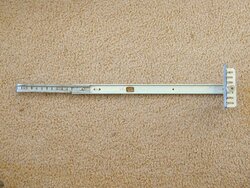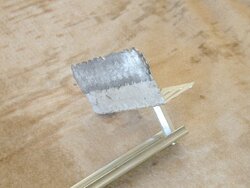WES999
Minister of Fire
Interesting thread, perhaps another angle to consider in extending burn times is stove insulation.
On my Regency I added some additional insulation behind/under the firebrick. I used 1/4" kaowool, I was able to fit it in easily. I have the smallest model, it has a 1.4 cf fire box, with the extra insulation, the stove seems to run with good secondary burn with the air control closed all the way down.
It is a simple mod, and easily reversible.
If I load it right with good dry wood, I can have enough coals left for a relight 12 hrs later.
On my Regency I added some additional insulation behind/under the firebrick. I used 1/4" kaowool, I was able to fit it in easily. I have the smallest model, it has a 1.4 cf fire box, with the extra insulation, the stove seems to run with good secondary burn with the air control closed all the way down.
It is a simple mod, and easily reversible.
If I load it right with good dry wood, I can have enough coals left for a relight 12 hrs later.



